Table of contents
Documentation date: 16 avril 2020
Version state
Valid
Validation date: 16 avril 2020
Version documentalist
- jwarnier (jwarnier@free.fr)
Version realisation
- Jacques Warnier (Computer Music Designer)
Version length
10 mnUpgrade Motivation
Antescofo~, Spat4, and Max8
Other version(s)
Detailed staff
- saxophone ténor
Electronic equipment list
Computer Music Equipment
-
1 Retina - Apple Laptops
(Apple)
-
1 Max 8 - Max
(Cycling74)
-
1 Fireface UFX - Sound Board
(RME)
Audio Equipment
-
1 DPA 4099 - Condenser Microphones
(DPA)
-
6 Loudspeaker - Loudspeakers
-
1 Digital Mixing Desk - Digital Mixers
Work related information
Premiere
- 15 octobre 2003, Paris, Ircam, Espace de projection, rencontres Résonances, concert Cursus
Publisher :
- Inédit
Realisation
- Jean Lochard
Work length
- 10 mn
Useful links on Brahms
- Illusion réelle pour saxophone et électronique (2003), 10mn
- Leilei Tian
| File | Author(s) | Comment | |
|---|---|---|---|
| Download [457,0 Mio] | All-in-one IR-64bits-cnsmdp15042020 |
Instructions
Instructions :
The electronic of this piece is a max patch with 6 outputs. It needs 6 speakers around the audience.
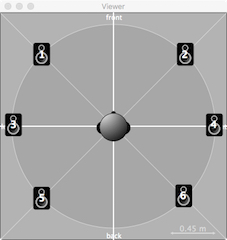
The main part of this piece is a 6 channels electroacoustic soundfile.
Sampling frequency is 44,1kHz.
It includes antescofo~, IrcamSpat 4, CNMAT OSC-route, and two effects made with max native externals. Everything is 64 bits compatible.
Installation :
Unzip the IR-64bits-cnsmdp15042020.zip archive and move its content into the folder of your choice. Choose this folder into the max file preferences path.
This folder content all dependencies needed for the patch max to start :
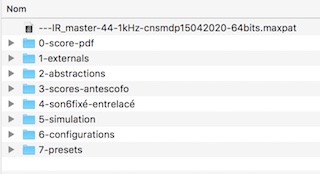
Start :
Open the ---IR_master-44-1kHz-cnsmdp15042020-64bits.maxpat into Max 8.
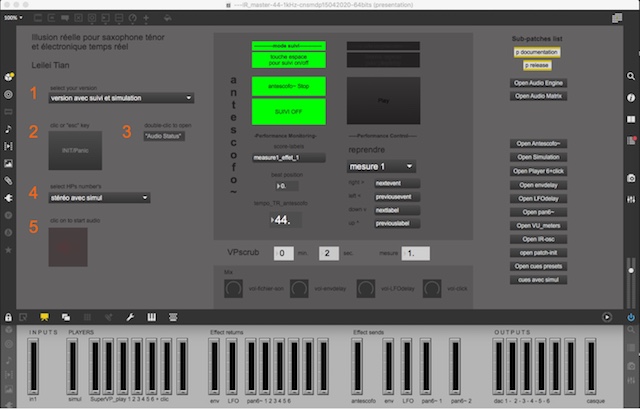
Follow the 5 steps checklist (1 to 6 orange figures)
1 : Choose a version with or without antescofo~, the Ircam score follower. It is also possible to choose a version with simulation to test this patch without live musician. In sequencer mode a click track is available on output channel 7.
2 : patch initialization. Push the init button or press the « esc key ». This button is also a Panic button if audio needs to be cut. (see patch-init sub-patch)
3 : Open the audio status to fix your audio environnement. Choose your audio sound card, and setup the audio status like this :
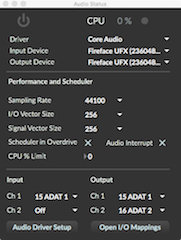
Setup the io mapping like this in an adapt environnement for example :
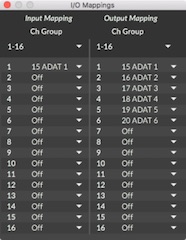
4 : choose the number of output channels and the input status between simulation or live instrument. Here we chose 6 channel outputs and live instrument in input.
5 : start audio
the patch is ready to start!
The patch react in different ways depending on your version choice. In the present example, « version avec suivi et instrument live », « 6 canaux avec instrument live », pressing space bar starts antescofo~ and few milliseconds later « suivi » is « on ». It’s recommended to start synchronized with saxophonist. Few seconds later you will hear the beginning of the hexaphonic sound file.
If you choose a version with simulation, a window with the simulation player appears into screen. Pressing space bar start both simulation playing and antescofo~.
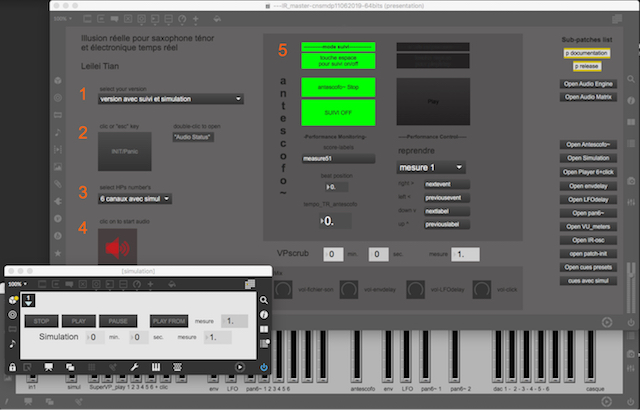
Whenever which version you chose, it’s possible to start the piece in several predefined cues.
Enjoy!
Jacques Warnier : jwarnier@cnsmdp.fr
© IRCAM

This documentation is licensed under a Creative Commons Attribution-NonCommercial-NoDerivatives 4.0 International License.
Version documentation creation date: 7 avril 2020 18:53, update date: 6 mai 2021 15:09